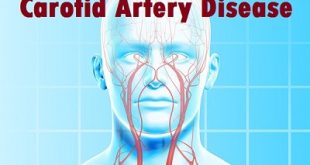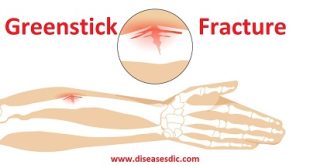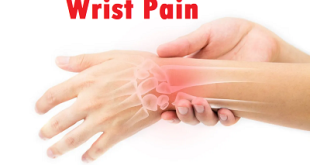Overview of Clubfoot
Clubfoot also known as talipes equinovarus (TEV), is a common foot abnormality, in which the foot points downward and inward. It’s when a baby’s foot turns inward so that the bottom of the foot faces sideways or even up. This happens because the tissues that connect muscles to bone (called tendons) in your baby’s leg and foot are shorter than normal.
Clubfoot is one of the most common non-major birth defects. It affects approximately one in every 1,000 newborns. Every year in the United States alone, it is estimated that as many as 8,000 babies are born with the condition. Both feet will be affected in half of these children. Boys are more frequently affected than girls.
During infancy, clubfoot does not cause pain. In fact, a child who does not receive treatment will begin to stand and even walk at normal developmental stages. However, the child will walk on the outside border of the foot, or even on the top of the foot. Children who are not treated will eventually have a severe functional disability. They will not be able to wear shoes, and the foot will eventually become painful, prohibiting participation in most sports and even certain forms of employment.
Epidemiology
Clubfoot is more common in males with a 2.5 to 2.8:1 Male: Female ratio. Various incidences have been noted between countries and regions ranging from 1-1.50 per 1000 live births, rising up to 3 per 1000 live births. Similarly, ethnic differences in occurrence have been reported with the lowest incidence (0.6%) among the Chinese Population, while the highest incidence (6.8%) in the Polynesian region. The accumulative incidence is approximately 1 per 1000 live births among Caucasians. Worldwide 80% of children born with clubfoot are in low-and middle-income countries.
Types of Clubfoot
There are three types of clubfoot that your child can be diagnosed with:
Idiopathic Clubfoot
A true (idiopathic) clubfoot accounts for the vast majority of cases. This type is stiff or rigid, and very hard to manipulate.
Positional Clubfoot
Treatment for clubfoot at Boston Children’s HospitalThe affected foot may be more flexible, with a condition known as positional clubfoot. This flexible type of club foot is caused by the baby’s prenatal position in the uterus (often breech). Positional clubfoot can easily be positioned into a neutral (not curved) position by hand.
Syndrome Clubfoot
A third type is syndrome clubfoot—in which the condition is part of a larger syndrome. This type is usually more severe and difficult to treat, with less positive outcomes.
Clubfoot risk factors
A child with a family history of clubfoot is more likely to develop it. Other risk factors are:
- Multiple births such as twins or triplets
- Position of the baby in the uterus
- Nervous system disorders such as cerebral palsy and spina bifida
- Less amniotic fluid surrounding the baby in the uterus (oligohydramnios) during pregnancy
Babies born with clubfoot may also have a higher risk for developmental dysplasia of the hip (DDH). This health problem affects the hip joint. The top of the thighbone (femur) slips in and out of the hip socket because the socket is too shallow.
Causes of Clubfoot
During the nine months of pregnancy, the fetus undergoes remarkable changes. In the skeleton, these changes include the separation of each individual bone in the body from one mass of bone material. In some cases, this process is flawed. A clubfoot occurs when this type of failure of separation occurs in the tarsal bones of the foot.
Until recently, most experts believed that the deformity was due to the foot being stuck in the wrong position in the womb. As development progressed, the foot could not grow normally because it was turned under and held in that position.
Today, most information suggests that clubfoot is hereditary, meaning that it runs in families. It is not clear what genetic defect causes the problem. It is not known yet whether the defect affects the development of the muscles, blood vessels, or bones of the foot.
The foot is an incredibly complex structure. To grow and develop correctly, all of the bones of the foot must move normally in relationship to each other. If the movement between two bones is abnormal, or non-existent, that changes how the bones grow after birth. If untreated, over time this leads to more deformity in the foot.
Symptoms of Clubfoot
Although different types of clubfoot exist, the condition is usually accompanied by the following foot deformities:
- Plantar flexion: Twisting of the ankle.
- Cavus foot deformity: An unusually high arch in the foot.
- Varus: An inversion of the heel that causes the front of the foot to turn inward.
- Adduction of the forefoot: the forefoot is pulled downward.
Other symptoms include:
- Stiffness in the ankle or foot tendons
- One calf appears shorter than the other
- Affected foot lacks full range of motion
A baby with clubfoot
Complications
Clubfoot typically doesn’t cause any problems until your child starts to stand and walk. If the clubfoot is treated, your child will most likely walk fairly normally. He or she may have some difficulty with:
Movement: The affected foot may be slightly less flexible.
Leg length: The affected leg may be slightly shorter, but generally does not cause significant problems with mobility.
Shoe size: The affected foot may be up to 1 1/2 shoe sizes smaller than the unaffected foot.
Calf size: The muscles of the calf on the affected side may always be smaller than those on the other side.
However, if not treated, clubfoot causes more-serious problems. These can include:
Arthritis: Your child is likely to develop arthritis.
Poor self-image: The unusual appearance of the foot may make your child’s body image a concern during the teen years.
Inability to walk normally: The twist of the ankle may not allow your child to walk on the sole of the foot. To compensate, he or she may walk on the ball of the foot, the outside of the foot or even the top of the foot in severe cases.
Problems stemming from walking adjustments: Walking adjustments may prevent natural growth of the calf muscles, cause large sores or calluses on the foot, and result in an awkward gait.
Diagnosis and test
- As this disorder is easily visible, it is detected immediately upon birth. With ultrasound technology, healthcare professionals are often able to detect CTEV before birth, particularly when it affects both feet. However, treatment may not begin until after birth.
- One benefit of early detection is that doctors can conduct further tests to determine whether the child has other musculoskeletal issues, such as muscular dystrophy or spina bifida.
- In certain cases, the doctor uses x-rays to study the condition in detail.
Treatment
Ponseti method
Clubfoot won’t get better on its own. It used to be fixed with surgery. But now, doctors use a series of casts, gentle movements and stretches of the foot, and a brace to slowly move the foot into the right position- this is called the Ponseti method.
The Ponseti method is done in two phases: the casting phase and the bracing phase.
Casting: The first cast is put on a week or two after the baby is born. Then, the baby returns to the surgeon about once a week for gentle moving and stretching of the foot, and placement of a new cast. The new cast turns the foot a bit more in the correct direction than the one it is replacing. Most babies will wear a series of 5 to 7 casts over a few weeks or months.
Bracing: When the foot is in the correct position, the orthopedic surgeon will fit the baby with a brace (also called an “orthotic”) instead of a cast. The brace is a bar with special shoes or boots at each end. It keeps the foot from twisting back to where it was before the casting. Feet grow a lot and very quickly in the first years of life. Without the brace to keep a corrected clubfoot in the proper place, that rapid growth would send the foot back into the clubfoot position.
A child will wear the brace all the time for about 3 months, and then only at night or during naps for a few years. Most kids adapt well to wearing the brace, though it can take them a day or two to get used to it.
French Functional Method
This method involves daily manipulation of the newborn’s feet by a skilled physical therapist, followed by temporary immobilization with elastic or non-elastic adhesive taping. This method was successful in 50.7% of the cases with mean follow up of 20 months.
Soft Tissue Release
Soft tissue release had been the main treatment for isolated clubfeet before the rise in popularity of the current non-operative methods in the last two decades. The procedure usually involves circumferential release of the subtalar joint and posterior capsule of the ankle joint with lengthening of the Achilles, flexor tendons, and posterior tibialis.
Prevention of Clubfoot
Because we’re not sure what causes clubfoot, it may not be possible to prevent all cases. But doing these things may help reduce your baby’s risk of having clubfoot:
Before pregnancy
Get a preconception checkup: This is a medical checkup you get before pregnancy to make sure you’re healthy when you get pregnant.
Talk to a genetic counselor if you have a family history of clubfoot: A genetic counselor is a person who is trained to know about genes, birth defects and other medical problems that run in families.
Get checked for infections, like Zika: Early testing and treatment can help you have a healthy pregnancy and a healthy baby.
During pregnancy
Go to all of your prenatal care checkups: Prenatal care is medical care during pregnancy. Getting early and regular prenatal care can help you have a healthy pregnancy. Go to all your prenatal care checkups, even if you’re feeling fine.
Protect yourself from Zika: Don’t travel to Zika-affected areas (a place where Zika is spreading) unless you absolutely have to. Prevent mosquito bites. Don’t have sex with a partner who may be infected with Zika or who’s recently travelled to a Zika-affected area. If you work in a hospital, doctor’s office, lab or other health setting, follow workplace safety rules to avoid contact with infected body fluids or lab samples.
Don’t smoke or expose yourself to smoke, drink alcohol or use street drugs: If you need help to quit doing these things, tell your provider.
 Diseases Treatments Dictionary This is complete solution to read all diseases treatments Which covers Prevention, Causes, Symptoms, Medical Terms, Drugs, Prescription, Natural Remedies with cures and Treatments. Most of the common diseases were listed in names, split with categories.
Diseases Treatments Dictionary This is complete solution to read all diseases treatments Which covers Prevention, Causes, Symptoms, Medical Terms, Drugs, Prescription, Natural Remedies with cures and Treatments. Most of the common diseases were listed in names, split with categories.








I have my son has problems of clupfoot
Please consult a doctor to diagnose the problem.
I like the app